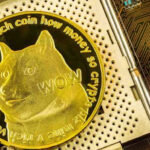What is Dogecoin?
Dogecoin is a cryptocurrency that got its name from the Doge internet meme, a Shiba Inu dog, and was launched as a “fun” alternative to Bitcoin.
Dogecoin is an open source, peer-to-peer digital currency. Like all cryptocurrencies, Dogecoin can be bought and sold like an investment and spent like money. Although each crypto is unique, it shares some similarities with its better known counterparts; for example the code is based on the code written for Litecoin. However, there are a few important differences.
In short, it is a currency that functions just like any other cryptocurrency, you can exchange it for goods and services from retailers and other firms, for other cryptocurrencies, or for fiat currencies like the dollar or euro.
What is mentioned by Dogecoin operating like many other cryptocurrencies is that it offers users the ability to exchange value over the internet without traditional financial gatekeepers.
As with other cryptocurrencies, it is essentially built on a database using a format called blockchain, where there is a public record of every transaction in the currency’s history.
Every Dogecoin is a “token”, but unlike fiat currency, money does not have a physical representation. There is only a record on the blockchain of who owns a particular token. When you sell the token or use it for a purchase, the blockchain notes that the token was transferred to a new owner.
It is seen as a surprise even by its creators that Dogecoin still continues to enjoy an enthusiastic fan base and a vibrant online community. While cryptos are more accepted as a currency for purchasing goods, Dogecoin does not have a very common real-world usage. It has several specialized markets, including crowdfunding initiatives and using Dogecoin to tip artists online.
Unlike Bitcoin, which has only 21 million released in the network’s economy, Dogecoin has 129 billion tokens in circulation, has no cap on its amount, and will continue to offer new mining-ready coin blocks every year. One of the reasons why the value of a Dogecoin is much lower than the value of a Bitcoin can be said to be the limited supply of Bitcoin.
The world of cryptocurrencies can be a little daunting and may contain technical language that will intimidate some potential investors. Yet this crypto, which we’ve heard a lot of lately, adds some humor to the crypto world. Although it started as a troll, Dogecoin is literally a real cryptocurrency with a market value of around $ 42 billion at the time of writing.
Who Created Dogecoin? Dogecoin Foundation
Dogecoin was created as a joke based on the Doge internet meme in December 2013 by marketer Jackson Palmer, who works for Adobe in Australia. Eventually, Portland-based IBM developer Billy Markus heard about the new currency and got permission to develop the software that created the Dogecoin that many now know and love. Palmer left the project in 2015, but Markus remains the lead developer even today.
Despite being hidden behind a funny mask, Dogecoin developers have insisted over the years to take the project and their responsibility to the users seriously.
Although Dogecoin is generally thought of as a more fun diversion rather than a serious investment like some other cryptos, it has been found under the spotlight several times. For example, Dogecoin users donated 27 million Dogecoins (worth about $ 30,000) to fund the Jamaican toboggan team’s trip to the Sochi Olympics in 2014.
How Does Dogecoin Work?
The Dogecoin code was originally copied from a previously defunct cryptocurrency called Luckycoin, itself a branch of Litecoin (LTC). Dogecoin borrowed a Scrypt-based consensus algorithm from this previous design to allow it to reach consensus on the transaction history of the computer network running its software.
As with Bitcoin, anyone running Dogecoin software can allocate computing power to provide this service (a process often called “mining”) in exchange for the opportunity to earn a newly minted cryptocurrency.
Dogecoin’s most notable experiment was its monetary policy. For example, there is no longer a limit on how much Dogecoin can be minted by the software. Initially, the total supply of Dogecoin was limited to 100 billion DOGE, but the developers eliminated it a few months after launch in an attempt to make the money supply inflationary.
Over time, this abundance of supply would keep miners from securing the Dogecoin blockchain. As a result, the mining process was integrated with Litecoin in 2014. This is an added bonus for everyone who is mining Litecoin.

